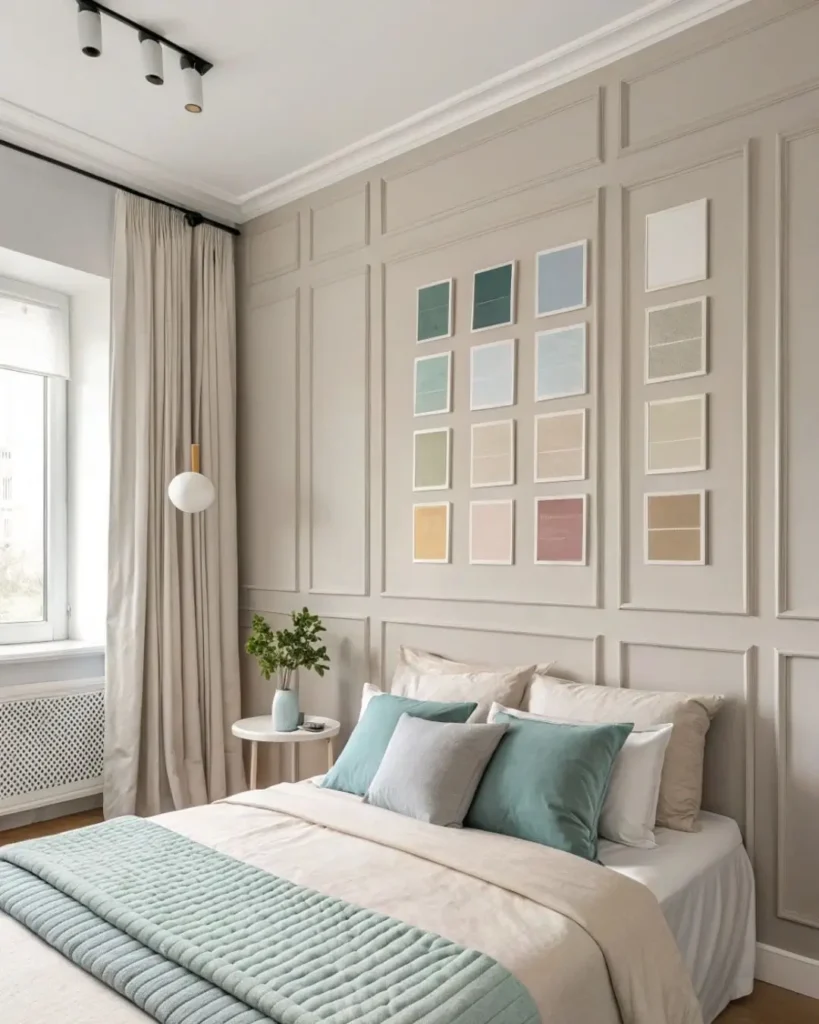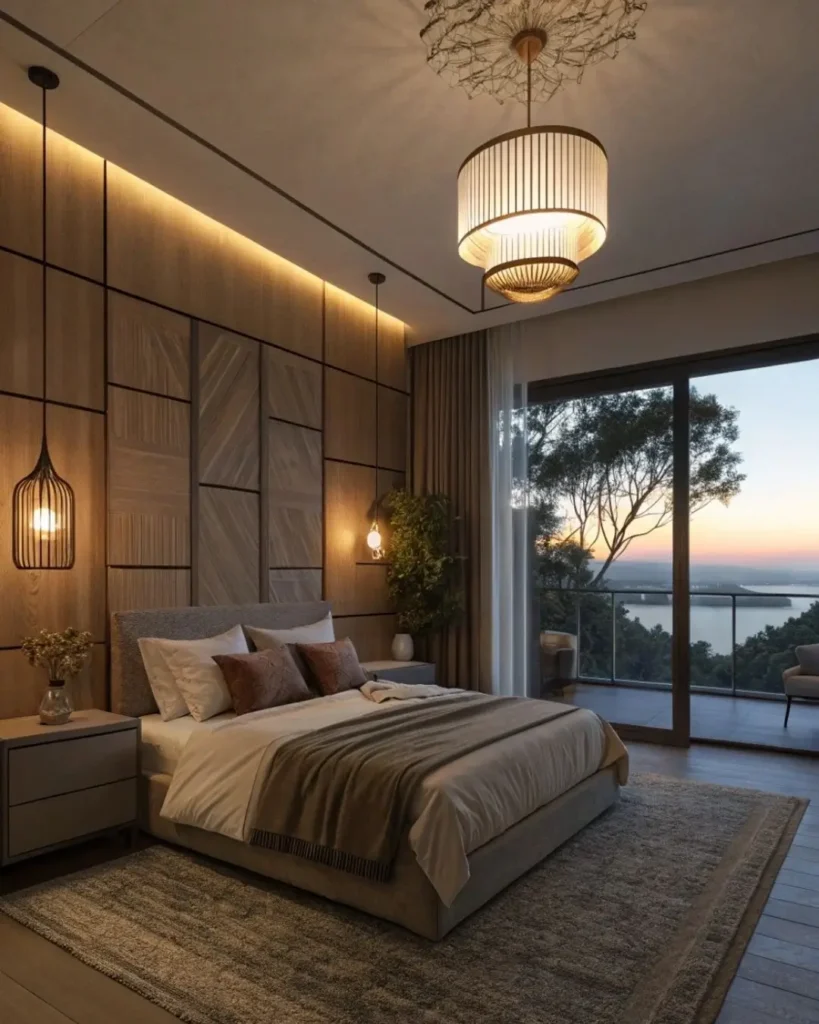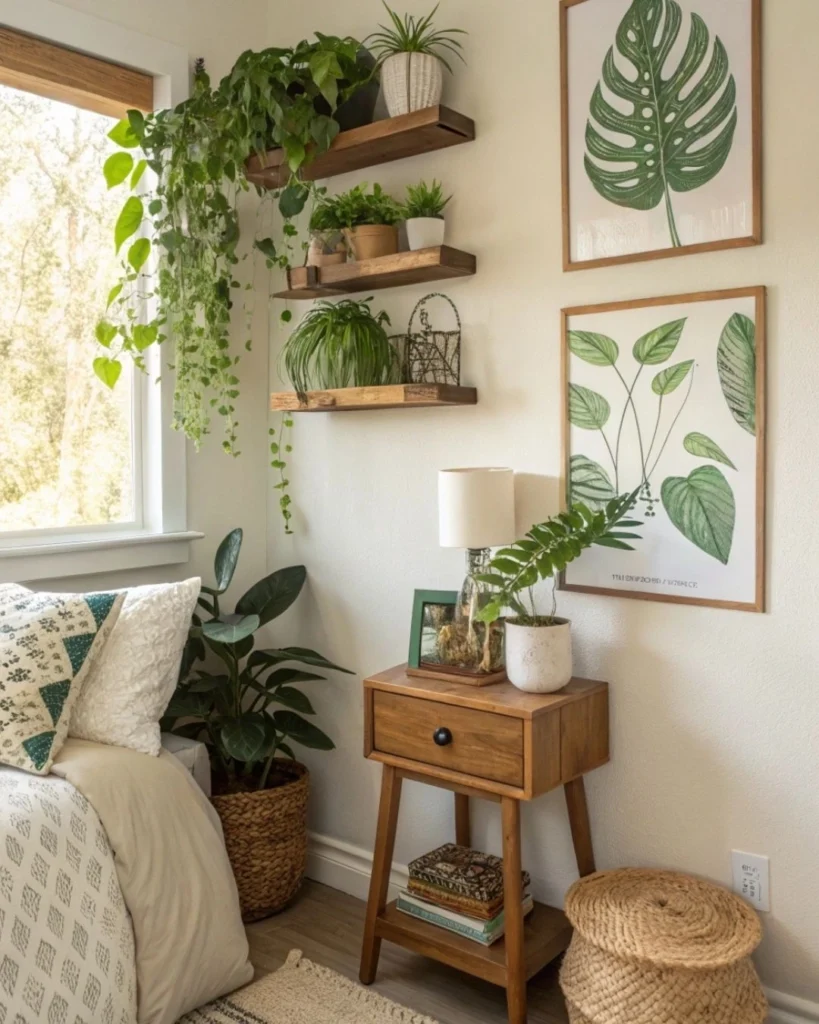Are You Making This Common Bedroom Design Mistake?
We all dream of that perfect bedroom—a peaceful sanctuary where you can unwind, recharge, and truly feel at home. Yet, despite good intentions, many people fall into the same trap: copying trendy decor ideas without considering comfort, function, or personal taste. The result? A space that looks good on Instagram but doesn’t feel right in real life.
The good news is that creating your dream bedroom doesn’t have to mean a total renovation or blowing your budget. By avoiding a few common mistakes and following the right design principles, you can transform your bedroom into a space that not only looks stunning but also supports better sleep and daily well-being.
In this guide, you’ll discover ten dream bedroom ideas that interior designers and stylists swear by—each one easy to implement and packed with practical value. Whether you’re decorating a new home or refreshing your current space, these tips will help you craft a bedroom you’ll absolutely love.
1. Start With a Vision: Define Your Dream Bedroom Style
Have you ever walked into a room that just feels right? That’s not by accident—it starts with a clear vision. Before buying furniture or choosing wall colors, it’s crucial to define what “dream bedroom” means to you.

Why It Matters:
Too often, people skip this step and end up with a mismatched space that doesn’t reflect their personality. Without a cohesive vision, your bedroom can feel chaotic rather than calming.
How to Find Your Style:
Start by gathering inspiration. Create a Pinterest board or save images on Instagram that resonate with you. Over time, you’ll begin to notice themes—maybe you’re drawn to cozy boho vibes, modern minimalism, or classic elegance.
Try This:
- Write down three adjectives that describe how you want your bedroom to feel (e.g., cozy, bright, serene).
- Choose a style that matches those feelings:
- Minimalist: clean lines, neutral colors, clutter-free
- Bohemian: layered textures, earthy tones, natural elements
- Scandinavian: soft lighting, simplicity, functionality
- Luxury hotel-inspired: plush fabrics, rich tones, symmetry
- Minimalist: clean lines, neutral colors, clutter-free
Expert Tip: According to interior designer Emily Henderson, setting a clear theme helps make all your other design decisions easier—from choosing furniture to picking the right accessories (Henderson, 2021).
2. Choose a Calming Color Palette That Reflects Your Mood
Color has a powerful impact on mood and sleep quality. Yet, many people opt for trendy paint colors without considering their emotional effect.

Why It’s a Mistake:
Bright reds or high-contrast walls may look stylish online, but they can be overstimulating in a space meant for rest. Instead, opt for colors that help you feel relaxed and grounded.
Best Color Options:
- Soft blues and greens: promote calm and restfulness (check out these 15 stunning green bedroom ideas to see how this palette transforms a space)
- Warm neutrals like beige or taupe: create a cozy vibe
- Muted pastels: offer personality without overpowering the space
Use the 60-30-10 Rule:
- 60% dominant color (walls or large furniture)
- 30% secondary color (bedding, rugs)
- 10% accent color (pillows, art, decor)
Pro Insight: A study from The National Sleep Foundation confirms that cooler tones like blue can enhance sleep quality by slowing down the heart rate and lowering blood pressure (National Sleep Foundation, 2020).
3. Illuminate Your Bedroom With Proper Lighting

Lighting plays a key role in both mood and function, yet it’s often an afterthought.
The Problem:
Using just one overhead light creates harsh shadows and flat lighting. This can make even the most beautifully decorated bedroom feel cold and uninviting.
The Fix:
Layer your lighting to create depth and ambiance. Combine:
- Ambient lighting (overhead or ceiling lights)
- Task lighting (bedside lamps, reading lights)
- Accent lighting (wall sconces, LED strips, candles)
Quick Tips:
- Choose dimmable bulbs for flexible mood lighting
- Use warm white tones (2700–3000K) to promote relaxation
- Place light sources at varying heights for visual interest
Smart Move: Smart lighting systems, like Philips Hue, allow you to adjust brightness and color via your phone—ideal for setting a sleepy-time mood without getting out of bed.
4. Invest in Comfortable and Stylish Furniture
It’s tempting to buy furniture based on looks alone. But if it isn’t comfortable, your dream bedroom will become a daily frustration.
What to Avoid:
- Mattresses that don’t support your back
- Bed frames that squeak or wobble
- Chairs or benches that are all style, no comfort
What to Do Instead:
- Choose a high-quality mattress suited to your sleep style (firm for back sleepers, softer for side sleepers)
- Go for an upholstered or padded headboard—it adds both comfort and sophistication
- Select dual-purpose pieces like storage ottomans or nightstands with drawers
Expert Advice: Dr. Michael Breus, known as “The Sleep Doctor,” emphasizes that the right mattress can make a huge difference in sleep quality—and, by extension, your overall health (Breus, 2021).
5. Create a Luxurious Bed Setup You’ll Never Want to Leave
If there’s one place where you deserve indulgence, it’s your bed. Yet many people underestimate the power of a well-dressed bed in making their bedroom feel dreamy and inviting.
Common Oversight:
Throwing on a basic comforter and calling it a day. A bed that lacks layering or quality fabrics can look flat and feel underwhelming.
The Dreamy Upgrade:
- Start with high-quality sheets: Look for 100% cotton with a 300+ thread count.
- Add a plush duvet or comforter: Choose down or down-alternative for coziness.
- Layer in texture: Use velvet throws, knitted blankets, and faux fur accents.
- Use at least four pillows: Vary sizes and fabrics for a luxurious hotel look.
Styling Tip:
Pull your duvet halfway down and fluff your pillows to create an effortlessly elegant, “just-made” aesthetic.
Expert Insight: According to HGTV designers, a well-styled bed is the focal point of any dream bedroom—and even boosts feelings of satisfaction and relaxation at bedtime (HGTV, 2023).
6. Maximize Storage Without Sacrificing Aesthetics
Clutter is the quickest way to destroy the calm, dream-like feeling in your bedroom. However, many storage solutions are bulky or unattractive, disrupting the room’s overall vibe.
The Challenge:
Limited space doesn’t mean limited storage—just smarter strategies.
Smart Storage Solutions:
- Under-bed drawers or bins (great for out-of-season clothes)
- Floating shelves to display décor without crowding
- Storage benches at the foot of the bed
- Vertical wardrobes that extend up to the ceiling
Design Hack:
Choose furniture with hidden storage—like a nightstand with shelves or a bed frame with built-in drawers.
Pro Tip: Marie Kondo, the queen of decluttering, recommends keeping only items that “spark joy”—a philosophy perfect for your dream bedroom (Kondo, 2014).
7. Add Personalized Décor That Sparks Joy
Many bedrooms fall into the trap of looking like a catalog page: beautiful, but soulless. The most enchanting bedrooms are those that reflect you—your memories, interests, and passions.
The Problem:
Copying trends without personality leads to a space that feels cold or impersonal.
The Fix:
Infuse your room with curated pieces that tell your story.
Ideas to Inspire:
- Hang framed photos or artwork with sentimental value
- Display souvenirs from travels
- Create a DIY gallery wall or vision board
- Add a custom sign with your favorite quote
Interior Advice: Decorator Nate Berkus insists that “your home should tell the story of who you are,” and nowhere is that more true than in the bedroom (Berkus, 2017).
8. Bring Nature Inside for a Serene Atmosphere

Nature has an extraordinary ability to calm the mind and reduce stress. That’s why biophilic design—bringing natural elements indoors—is a rising trend in dream bedroom ideas.
Why It Works:
Plants purify the air, absorb noise, and add soft, soothing greenery to your space.
Natural Touches to Try:
- Low-maintenance plants: snake plant, pothos, peace lily
- Botanical prints for art or pillows
- Wooden textures in furniture or floors
- Natural fibers like linen, jute, and cotton
Bonus Benefits:
NASA research confirms that certain indoor plants can improve air quality by filtering out toxins and increasing oxygen levels (Wolverton et al., 1989).
9. Design a Multi-Use Space With Functionality in Mind
Your bedroom isn’t just for sleeping—it may also serve as a reading nook, work zone, or quiet retreat. Yet failing to plan for these needs can make the room feel cluttered or confusing.
The Modern Need:
With more people working from home or craving spaces to unplug, bedrooms are evolving.
How to Make It Work:
- Reading corner: Add a comfy chair, a side table, and a floor lamp.
- Workstation: Use a compact desk and floating shelves to save space.
- Meditation zone: Place a yoga mat, cushions, and calming elements like a salt lamp.
Layout Suggestion:
Use rugs or lighting to visually divide areas without adding walls.
Expert Note: A well-zoned room helps improve focus and reduce visual chaos—key to keeping your dream bedroom both functional and beautiful.
10. Use Scents, Sounds, and Textures to Create a Sensory Haven
A dream bedroom engages all your senses. While visual appeal is important, incorporating touch, sound, and scent transforms the space into a true sanctuary.
What’s Often Overlooked:
People stop at decorating and forget how much your senses impact sleep quality and comfort.
How to Elevate the Experience:
- Scents: Use essential oils, soy candles, or diffusers (lavender is great for sleep).
- Sounds: Add a white noise machine or gentle playlist to block outside noise.
- Textures: Layer velvet, linen, silk, or wool to create depth and coziness.
Try This:
Keep a soft robe or plush rug by the bed—it’s a simple way to engage touch and increase comfort right away.
Sleep Science: The Sleep Foundation highlights that multi-sensory environments contribute significantly to better sleep hygiene (National Sleep Foundation, 2022).
Quick Table: Top Elements for a Dream Bedroom
| Element | Best Practice / Tip |
| Color Palette | Soft blues, greens, or warm neutrals |
| Lighting | Mix ambient, task, and accent lighting |
| Furniture | Prioritize comfort and storage-friendly pieces |
| Bedding | Use layered, breathable, high-thread fabrics |
| Storage | Opt for vertical and hidden solutions |
| Natural Touches | Add plants, wood, and organic textures |
| Sensory Features | Use soothing scents, calming sounds, textures |
Conclusion: Your Dream Bedroom Is Just a Few Steps Away
As you’ve discovered, crafting a dream bedroom doesn’t require a major renovation or an unlimited budget. With thoughtful choices—from selecting the right color palette to curating your furniture and decor—you can create a space that reflects your personality and supports deep rest.
Start with just one idea from this list and build from there. Whether it’s upgrading your bedding, adding plants, or personalizing your walls, each step brings you closer to a bedroom you’ll genuinely enjoy waking up in—and winding down in every night.
If you’re feeling overwhelmed or unsure where to begin, don’t hesitate to consult an interior design professional who can bring your dream bedroom ideas to life with precision.
Frequently Asked Questions (FAQs)
1. How do I plan my dream bedroom?
Planning your dream bedroom starts with clarity. Begin by identifying your personal style—whether it’s minimalist, bohemian, modern, or rustic. From there, build a mood board using photos, textures, and color palettes that inspire you. Measure your space carefully, consider natural light sources, and prioritize functionality. Use the list of dream bedroom ideas from this article to guide your decisions—focusing on lighting, furniture comfort, storage, and personal touches to create a space that reflects both your taste and lifestyle.
2. What are good themes for bedrooms?
There are many beautiful and functional themes to choose from when exploring dream bedroom ideas. Popular themes include:
Scandinavian: Clean lines, soft hues, and simplicity
Boho Chic: Rich textures, layered textiles, and global decor
Modern Farmhouse: Rustic wood, cozy neutrals, and vintage charm
Luxury Hotel-Inspired: Plush bedding, symmetry, and rich finishes
Nature-Inspired: Indoor plants, wood tones, and earthy colors
Select a theme that aligns with how you want your bedroom to feel—relaxed, energized, cozy, or elegant.
3. How can I make my bedroom look attractive?
To make your bedroom visually appealing, focus on balance, harmony, and personalization. Use dream bedroom ideas such as choosing a calming color palette, layering different textures, and adding ambient lighting. Avoid overcrowding the space and instead curate each element intentionally. High-quality bedding, organized storage, and thoughtfully chosen decor will elevate the room’s aesthetic. A few statement pieces, like an accent wall or a decorative headboard, can add visual interest without overwhelming the space.
4. What pictures look best in a bedroom?
When incorporating pictures into your bedroom, think serenity and sentiment. Art that evokes calm—such as nature scenes, abstract prints, or soothing color palettes—works beautifully. Personal photos in black-and-white or soft tones also complement a restful environment. According to top dream bedroom ideas, framed prints above the bed, a small gallery wall, or leaning art on shelves can create visual interest while keeping the room tranquil. Choose artwork that resonates with you emotionally—it will make your space feel more personal and complete.
References (APA 7th Edition)
- Berkus, N. (2017). The Things That Matter. Spiegel & Grau.
- Breus, M. (2021). The Sleep Doctor’s Diet Plan. Rodale Books.
- HGTV. (2023). 10 Ways to Make Your Bed Look Expensive. https://www.hgtv.com
- Henderson, E. (2021). Styled: Secrets for Arranging Rooms. Clarkson Potter.
- Kondo, M. (2014). The Life-Changing Magic of Tidying Up. Ten Speed Press.
- National Sleep Foundation. (2020). Color Psychology and Sleep. https://www.sleepfoundation.org
- National Sleep Foundation. (2022). Creating a Sleep-Friendly Bedroom. https://www.sleepfoundation.org
- Wolverton, B. C., Johnson, A., & Bounds, K. (1989). Interior Landscape Plants for Indoor Air Pollution Abatement. NASA. https://ntrs.nasa.gov


